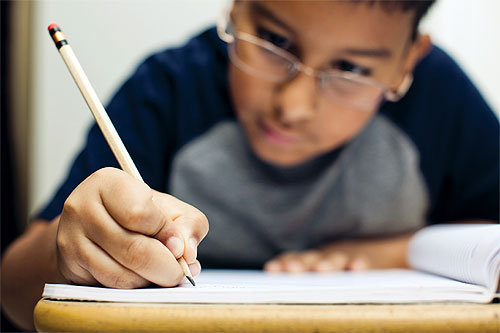It’s 1 p.m. I have just given my sixth grade science class an assignment reviewing several concepts and key vocabulary words related to energy. The students are free to use their textbooks, past assignments, and any other resources they choose.
I stand at the front of the room, looking out at the expressions of bewilderment on their faces. We have practiced these concepts for days, and the students know the material; they simply need to apply it.
Almost immediately the outbursts of “I don’t know how to do this!” “What does this mean?” and “Can you help me, I can’t do this” begin. Before reading the first question, they are crying out. Why? Because they lack the motivation to try, the repertoire of resources to use, the confidence to continue on their own.
As 21st-century technology dominates our society, the skills individuals need to be successful change. It is no longer enough for students to know the facts; anyone with Internet access can do that. Students of the 21st century must think creatively, solve problems, and be self-directed in their learning. It is this last skill, that of self-directed learning, that I needed to develop in my students.
Topics for Reflection
Three to four times a week, during the last 10 minutes of class, I posed a question for students to reflect on, such as
- What is one of your goals in school and why is it a goal?
- What will help you to achieve your learning goal?
- How are you trying to achieve your learning goal?
- How do you know if you have achieved your learning goal?
- Why is it important to achieve this learning goal?
- What other learning goal could you set?
- What were two things you learned today?
- What was your opinion of the day?
- What were all of the questions that you had from today’s class?
Students had the remaining time to reflect on the prompt by journaling in traditional notebook journals or using digital Google Presentation journals. At the end of class, I read the journals and responded to the students’ reflections.
After about three weeks, we took time as a class to discuss the journals. Students voluntarily shared general opinions and specific journal entries with the class. We defined goals and self-directed learning and brainstormed ways that each student could become more self-directed.
I explained the process teachers go through when they create lesson plans and explained that they would be using this same process to create their own action plans to become more self-directed. Students identified a goal, identified the appropriate assessment, and finally created the procedures necessary to reach their goal.
Plans in Action
Individual conferences with students gave me an opportunity to discuss and approve their plans. For example, one student set her goal: To speak up in class at least five times every day. Her assessment: To have five tally marks on each day of the week on her calendar. Her plan: 1) Get a calendar. 2) Put the calendar on her desk. 3) Make a tally mark every time she asked or answered a question in class.
Students spent the next three weeks implementing their action plans and continuing to journal on their journey to self-direction.
Throughout the six weeks of this activity, I modeled self-directed learning strategies and taught mini-lessons on skills and strategies such as using resources, looking for clues on the assignments, and asking neighbors for guidance.
Several themes emerged from the journals.
First, students expressed a positive outlook on their work:
- “It’s helped me learn. I used to get Cs and now I’m getting As. It helps me pay attention more because I know I’ll have to write down what I learned.”
- “I think my self-directed plan is going good, and I think it helps a lot. I used to be the last person to be ready in class now I’m one of the first people to be ready.”
Another outcome was students’ increasing confidence:
- “My self-directed plan has affected me as a person because I am more neat and organized.”
- “It has affected me as a person by helping me become more efficient and motivated.”
- “My self-directed plan has affected my learning by making me more independent.”
It was also clear that students were able to transfer their self-directed learning skills to daily living:
- “I think I will use a different self-directed plan in language arts to make sure my work is turned in and done.”
- “If I had a job and I got confused a lot and I didn’t really know what to do, then I would make myself a self-directed plan.”
I surveyed the students several times during the project. Results from the first survey revealed that students generally liked science but did not feel capable of learning on their own. Students also said they felt stressed when they did not know what to do.
As the journals and action plans continued, students seemed more capable of learning on their own. They also were a little better able to see the benefits of setting goals. While these shifts may seem minor, it is likely that students have a deeper knowledge about self-directed behaviors and are thinking more critically about their responses.
Digging Deeper
I will continue the reflective journaling and student action plans in class. I will continue to provide prompts and modeling to encourage students to dig deeper into their thoughts. This modeling will focus on helping them reflect in ways that show evidence of serious thinking and questioning.
I’d like the reflections to be honest, more thorough, well-organized, and synthesize ideas in and outside of class. With guidance—and 10–25 minutes twice a week rather than 10 minutes—I believe they will be able to dig deeper.
Staci Korkowski is a sixth grade science teacher at Valley Middle School in Grand Rapids, South Dakota.staci.korkowski@gmail.com
Published in AMLE Magazine, January 2014.

